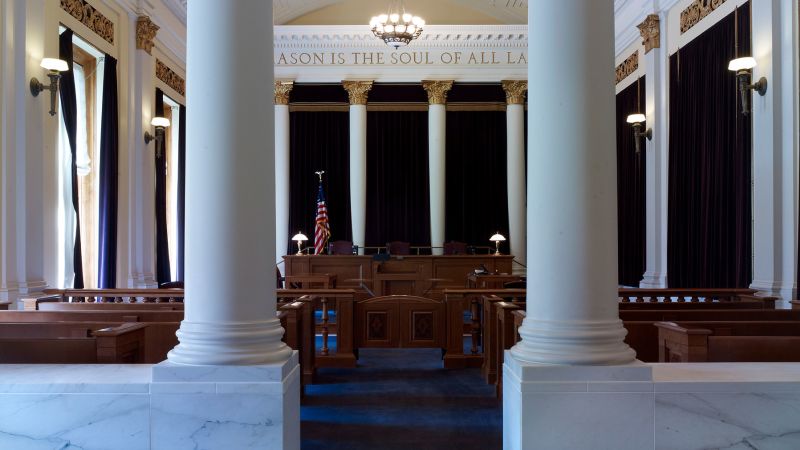Across the country, federal courts are buckling under an ever-increasing caseload in the absence of long-awaited congressional action that would add judges to match a significant growth in litigation over the last several decades.
It’s been 34 years since lawmakers last passed a comprehensive bill increasing the number of judges on lower courts. In that period, the American population has grown by 80 million. The number of filings in US district courts increased by more than 30%. In the past year, there were more than 724,000 pending cases being handled by a federal trial bench made up of 677 judgeships (including roughly 40-50 vacancies) – a 72% increase in pending cases over the last decade, during which, no new district seats have been created.



In the US system capping the house makes no sense. If the lower chamber represents the population, and the upper the states, capping the house just forces the house to more reflect the states more and dilutes the individual power of people in more populated states. The result is a right lean, since right leaning states are less populated overall. Gross.
We’re letting the design of buildings determine the design of our government. House and SCOTUS, in varying ways.
We can say it’s more politics and… That’s fair, but it’s time to build bigger. 13 SCOTUS justices and enough room for many, many more representatives and room to grow.
It’s too bad no one has figured out how to hold a meeting without everyone needing to be in the same place.
It made sense… in 1919. But mysteriously what worked 105 years ago doesn’t necessarily work today.
That’s simply not correct. Every state is guaranteed at least one house rep, but aside from that it’s population based. That’s why the census is such a big deal; it reapportions representatives. The less-populated states that lean heavily to the right get very, very few representatives, while much more heavily populated states get many, many more representatives. California currently has 53 house representatives; South Dakota has one.
A much bigger issue is partisan gerrymandering. Even after representatives are apportioned, the state creates the districts. If the state legislature is controlled by Republicans, they’ll create voting districts that limits the ability of Democratic–largely urban–voters to select representatives of their choice. The result is that a state like mine has very few Democratic representatives for the state, despite being very purple.
And, BTW, this goes both ways. The rural parts of California skew very conservative, and yet Republicans get very few house seats (and are a superminority in the California legislature). In Texas, major metro areas like Austin, Dallas, and Ft. Worth all skew Democratic, and yet Texas has very, very few Democratic house seats. If redistricting was done by an expert system based solely on number of voters and compact, contiguous districts–with no other information given to the program so that it couldn’t account for demographics like race, wealth, partisan lean, etc.—you’d likely see very, very different results in the house of representatives.